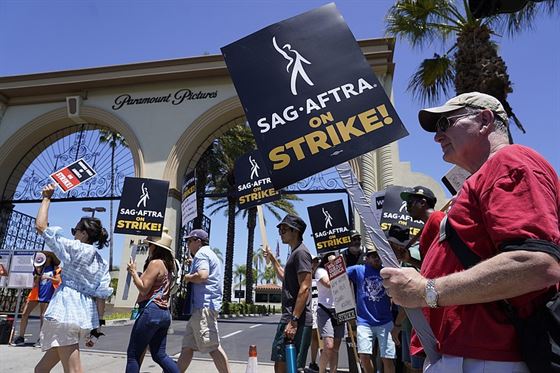For the past four months, the Hollywood film industry has been at an unprecedented turning point. On May 2, 2023, the Writers Guild of America (WGA) went on strike, refusing to write, promote or pitch anything to the Alliance of Motion Picture and Television Producers (AMPTP), a trade association which makes up many of Hollywood’s biggest studios and production companies, such as Walt Disney Studios, Warner Bros. Pictures, Universal Pictures, Netflix and so on and so forth. On July 14, 2023, the Screen Actors Guild – American Federation of Television and Radio Artists (SAG-AFTRA) followed suit by refusing to perform, promote or audition, making the first dual Hollywood strike in over 60 years. But the question is, why?
What is at stake for over 180,000 workers to go on strike for as long as they have?
One major issue for both the WGA and SAG-AFTRA is the rising use of artificial intelligence in the film industry. With the advent of tools such as ChatGPT, screenwriters fear that generative language models could be used to replace screenwriters entirely, and as such, they hope to negotiate against studios using AI to write or rewrite screenplays.
For SAG-AFTRA, the primary fear comes in the form of generating digital performances, much like what has been seen in recent Lucasfilm productions such as “Indiana Jones and the Dial of Destiny” and the second season of “The Mandalorian.” Those were both cases of de-aging with the actors’ explicit consent, but there are far more extreme uses allegedly in the works.
The BBC reported that an artificial likeness of the late James Dean had been cast in an upcoming film entitled “Back to Eden.” Dean died in a car accident in 1955, almost a year before the first ever artificial intelligence research began in 1956, so it stands to reason that Dean did not consent to his image being used in such a way. Additionally, some studios are hoping to be able to artificially generate crowds instead of hiring casts of extras and “day players.”
Another major sticking point is wages. With the advent of streaming services, residual pay for actors and writers is much different from the days of television and physical media at their peak. In the past, every time a rerun of a TV show was aired, or someone bought a DVD of a movie or show, the actors and writers involved would get a cut, the percentage of which was based on their work and the amount of which was based on sales and viewership, that gradually declined over time. While actors and writers still do get those residuals from streaming, they are much smaller than they once were and with much shorter timelines of decline.
Part of this is due to streamers not releasing any solid viewership data, instead preferring to release data based on “viewership hours.” For example, Netflix touts that the 2022 film “RRR” has over 70 million hours of viewership, however, that does not tell the full story. It could mean the three-hour film was viewed 23 million times, or the first half of the film was viewed 46 million times, or the film’s Oscar-winning “Naatu Naatu” sequence was viewed over 1.1 billion times.
As such, proper viewership statistics are yet another sticking point for the WGA and SAG-AFTRA. Other wage issues, specific to the WGA, include a minimum size for writer’s rooms and a flat minimum wage for writers across television and streaming alike.
So how does this affect films that are in production, or are completed?
As far as movies and shows that are currently unfinished, they will remain unfinished until the strikes end. There have been some workarounds, however. Studios not part of the AMPTP such as A24 and AMC, in addition to Taylor Swift’s upcoming Eras Tour concert film, have made interim agreements to film and promote upcoming projects, and Paramount Pictures has been shooting as much as they can of their upcoming “Sonic the Hedgehog” projects, as those films heavily feature fully CGI characters. But aside from that, everything is on pause.
Writing for hit shows like “Abbott Elementary” and the final season of “Stranger Things” are frozen in time, shooting on projects like Ridley Scott’s “Gladiator” sequel and Marvel Studios’ “Deadpool III” has been shut down, and actors like David Corenswet, the new Superman in James Gunn’s upcoming DCU reboot, can’t even get fitted for costumes. Additionally, finished projects such as the upcoming “Dune: Part Two” and “Kraven the Hunter” have had their release dates delayed from 2023 into 2024, due to their lead stars not being able to promote the projects, which would likely affect their box office prospects.
This dual strike will undoubtedly be a turning point in the history of the film industry, whether it ends on the terms of the WGA and SAG-AFTRA or the AMPTP, so regardless of which side you’re on, if you care about film or television in any way, keep an eye on how this shakes out.



